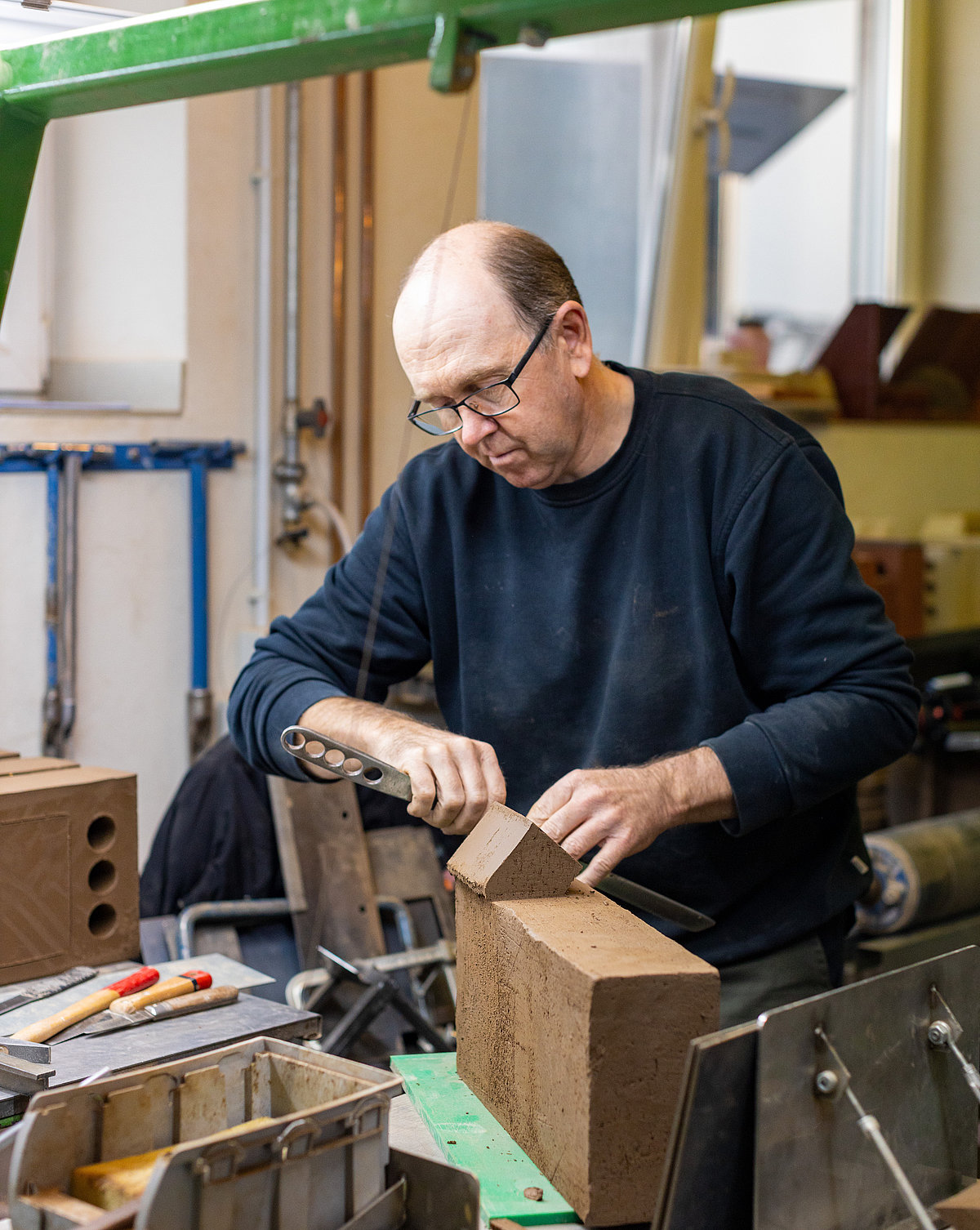When it comes to climate protection and improving living environments, building renovations and modernisations are absolutely essential. Unfortunately, however, those responsible for such projects often face challenges with regard to the topic of species protection.
If building renovations limit the living space of protected animals, compensatory measures must be implemented in accordance with the German Federal Nature Conservation Act. This requirement applies to animals such as various species of birds and bats, whose nesting places are closed up and sleeping locations are blocked off or even destroyed.
Our solution to this problem has been given a very fitting name: the “clinker nesting brick”.
This special module acts as an ideal replacement habitat for not one but many species of animals. The clinker nesting brick enables users to support species protection while ensuring that their construction work complies with the statutory regulations. The different modules can be adapted to suit every building envelope in terms of appearance. They perfectly meet the needs of the animals living in building façades while meeting official requirements at the same time.
Become a conservationist. With aesthetically pleasing integratable nesting bricks from Hagemeister.
Swift colony in Rhede fully
accepts nesting boxes made of clinker bricks
A current example of successful architectural integration and rapid acceptance of the new habitats by a colony of swifts is the new residential buildings on Eichendorfstraße in Rhede (to the expert report). Bocholter Heimbau eG, together with the architectural firm Derksen + Ritte, was the first to plan and install 120 nesting bricks there. The client, planners and the entire neighbourhood are delighted.
Hear and see expert voices from those involved, impressions of the construction project and the Proof of occupancy in our short video!
NK 1
- Installation depth: 170 mm
- Screw-on hatch (maintenance possible but not necessary), interior dimensions: see diagram in the brochure
- Nest concave: approx. 120 mm in diameter, approx. 15 mm deep; opening: approx. 32 x 70 mm
- 40° opening angle
- Air holes
- Mounting height: between 8 and 20 m
- Open access (no trees or bushes nearby)
- Do not install on the south side / Only install in the shade of the roof overhang and do not place above window and door openings
- Installation of several clinker nesting bricks on the building recommended due to colony-breeding birds
Find the proof of settlement (object-video) and our brochure for download.
NK 2
- Installation depth: 115 mm
- Interior dimensions: see diagram
- Opening: approx. 80 x 50 mm
- Mounting height: between 1.5 and 3.5 m
- Ideal position: in close proximity to trees and bushes
- Do not install on the south side / Only install in shaded positions
- Do not place above window and door openings
Find our brochure for download.
NK 3
- Installation depth: 170 mm
- Screw-on cleaning hatch
- Opening can be adjusted for specific residents
- Interior dimensions: see diagram in the brochure
- Opening up to 30 mm -> tit species
- Opening up to 34 mm -> house sparrow etc.
- Air holes
- Mounting height: between 1.5 and 3.5 m
- Ideal position: in close proximity to trees and bushes
- Do not install on the south side / Only install in shaded positions
- Do not place above window and door openings
Find our brochure for download.
NK 4
- Installation depth: 170 mm
- Ventilation holes
- Interior dimensions: see diagram in the brochure
- Opening: approx. 130 x 50 mm
- Air holes
- Mounting height: between 1.5 and 3.5 m
- Ideal position: in close proximity to trees and bushes
- Do not install on the south side / Only install in shaded positions
- Do not place above window and door openings
Find our brochure for download.
NK 5
- Bat box (integrated into the wall)
- Installation depth: 115 mm
- Modular construction, extendible to nursery roost size
- Self-cleaning, maintenance-free
- Species-specific designs possible
- Opening: approx. 120 x 30 mm
- Interior dimensions of the standard module, divided into 2 chambers: see diagram in the brochure
- Wood-wool lightweight building board across the interior and at the top in the capstone; opening between chambers: 25 mm
- Mounting height: from 2.5 m
- Ensure open access (no trees etc.)
- Do not install on the south side / Only install in the shade of the roof overhang
- Avoid direct light shining on the opening (lanterns, spotlights etc.)
Find our brochure for download.
NK 6
- Installation depth: 115 mm
- Prefabricated element ready to be bricked in
- Basic nest structure included to be completed by the martins (for better acceptance)
- Roof overhang angle: 35°
- Two stone types (corner and centre element)
- Basic nest structure made of fired clay, removable, diameter: approx. 120 mm
- Dimensions: see the diagram in the brochure
- Mounting height: approx. 2 to 8 m
- Installation of several elements is recommended due to colony-breeding birds
Find our brochure for download.
Hubert Rietmann
An idea
- that changed everything
Here you can read all about the extraordinary idea of just one employee.
This spark of genius led to the creation of a completely new, unique and innovative product that is not only one of a kind in the market but also breaks new ground in the world of species protection.
Find out more














